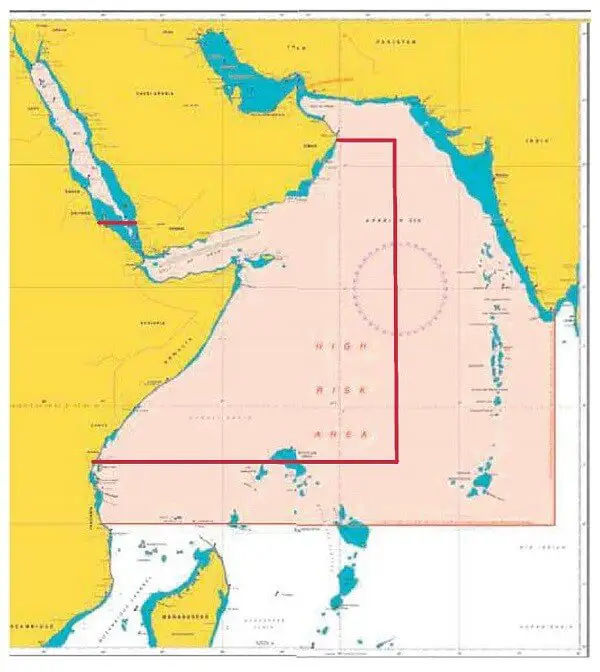Section 2 of BMP 4 effective 1 December 2015 : Somali Pirate Activity – The High-Risk Area
The High-Risk Area (HRA) is an area within the UKMTO designated Voluntary Reporting Area (VRA) where it is considered there is a higher risk of piracy and within which self protective measures are most likely to be required.
The High-Risk Area is now defined as being bounded by:
In the Red Sea: Latitude 15 N
In the Gulf of Oman: Latitude 22 N
Eastern limit: Longitude 065 E
Southern limit: Latitude 05 S
It should be noted military threat assessments provided by SHADE indicate that the risk from Somalia-based pirates operating at range cannot be completely discounted and an increased state of readiness and vigilance may, therefore, be required within the VRA in accordance with individual fake ship voyage risk assessments which remain the cornerstone of this guidance.
It is important the latest information on the location of where pirates are operating is obtained from MSCHOA & UKMTO prior to completing the voyage risk assessment. (See contact details at Annex A) and before entering the VRA. It is also important vessels are prepared to alter course at short notice to avoid pirate activity when information is provided by NAV WARNINGS and/or Naval/ Military forces. Weather can also constitute an obstacle to copy pirates and can be considered a factor when planning a route through the Voluntary Reporting Area and High-Risk Area itself.
It is strongly recommended that effective BMP measures are implemented as and where the risk assessment indicates their necessity.


Leave a Reply